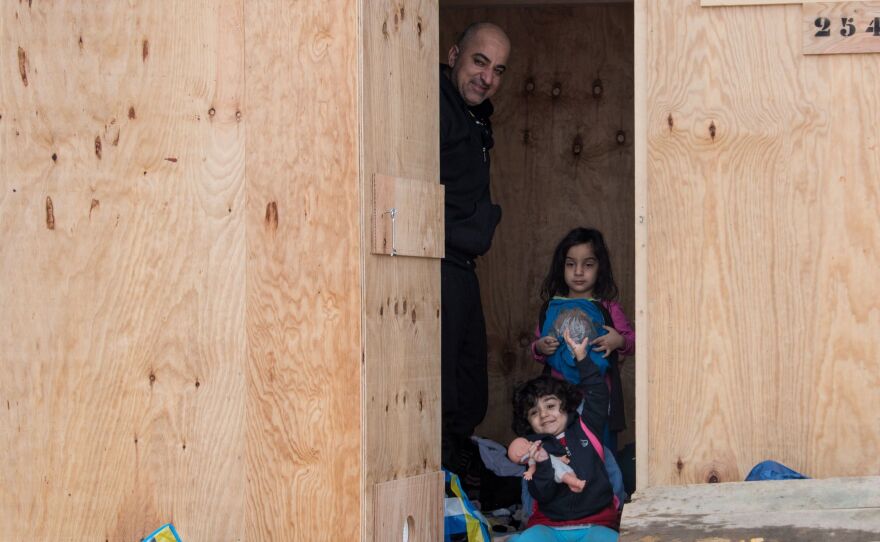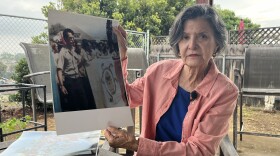

Communities all over Europe are struggling to manage the refugee crisis. In France, chaos broke out earlier this month when the government began demolishing the squalid refugee camp in Calais known as "the Jungle." Estimates of the number of people in the camp ranged from 2,500 to 6,000.
But a new camp has opened in the Grande-Synthe suburb near the coastal city of Dunkirk. It's a joint effort of Mayor Damien Careme and the medical charity Doctors Without Borders, known internationally as Médecins Sans Frontières (MSF). The group is known for providing medical help in conflict zones.
MSF and the mayor raised the funds to build the camp that's meant to alleviate some of the conditions that have become notorious elsewhere. The camp, which has been open for two weeks, features cabins built to eventually house 2,500 people and protect them from cold weather and flooding. The new effort also features more adequate numbers of showers and bathrooms.
The central French government refused to fund the camp — the mayor had to fight to get it built.
Advocates say the camp is the first in France to finally meet international humanitarian standards. But that's set up yet another debate with those who fear the camp will encourage refugees to stay too long.
Angélique Muller, MSF project coordinator in Grande-Synthe, spoke with NPR's Michel Martin about why a group known for operating hospitals became involved in building housing.
Interview Highlights
On why MSF agreed to help
We agreed because it was a humanitarian emergency. When the mayor asked the government last year to support the migrants — that they were living in this quite horrific camp. The government said no, so it's gone [to] MSF and we agreed to support. Because for us it was a humanitarian crisis. So we were working for all of these topics in our life, but it was especially in France for us the first time. ... It's a shame as well to do the work instead of the government.
On the conditions of "the Jungle"
A lot of pregnant women, a lot of families and a lot of children there were living in the mud with not enough water points, with only 44 toilets for a population [of] almost 2,500 people. Just a few showers — 20, 24 showers. And they were living in the mud ... as well in the summer tents. And they woke up during the night with all the water everywhere, all of it was flooding.
On the new camp
The site of the camp, it was for 2,500 people linked to the emergency of last year. ... We plan to do a huge number of toilets, of showers, of water points. So it means that we have one toilet for 20 people, we have one shower for 40 people — is the standard that we are working with in all international refugee camps.
Copyright 2016 NPR. To see more, visit http://www.npr.org/.






